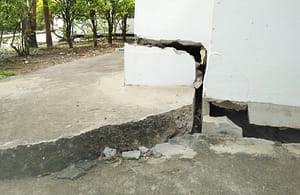The Ultimate Guide To Best Basement Waterproofing
The Ultimate Guide To Best Basement Waterproofing
Blog Article
Best Basement Waterproofing Fundamentals Explained
Table of ContentsAn Unbiased View of Best Basement WaterproofingThe 20-Second Trick For Best Basement WaterproofingBest Basement Waterproofing Fundamentals ExplainedOur Best Basement Waterproofing DiariesEverything about Best Basement Waterproofing
AdvantaClean's skilled specialists and professionals will find the water source. If wall surface or piece fractures are existing, we will inject polyurethane and epoxies right into the splits and seal the concession, preventing additional dampness from going into.Mounting basement air flow systems, conditioning systems, or cellar dehumidifier systems to get water out of your cellar. Selecting AdvantaClean's cellar waterproofing services is an effective way to treat wetness and protect against mold from compromising the framework of your home and the wellness of your family.
If there's condensation outside of the foil, you have high moisture in your cellar. Repair it with a portable area dehumidifier or a whole-house humidifier system as opposed to waterproofing products. If the aluminum foil has condensation on the within surface area (following to the wall surface), the soil around your house may be naturally damp from a high water table or bad soil drain.
You can waterproof simply your interior wall surfaces, which may address the trouble. Or you can waterproof your outside walls, which is a better wager yet more costly. Right here's the scoop on the different types: These thick finishes are cement-like. Once they dry out, they adhere completely to concrete and masonry wall surfaces.
The Best Guide To Best Basement Waterproofing
Concrete waterproof finishings can't be used to formerly painted surface areas; examine the tag. Known as densifiers, they are appropriate only for wall surfaces that haven't been painted or secured.
You comb, roll, or spray it on much more heavily one gallon covers just 75 square feet, not the 300 square feet regular with typical paint. Waterproof paint is great for DIY application. You can use it over repainted surface areas, and paint over it once it's treated (one gallon costs $37).
It can cost $10,000 to $15,000, depending on the job required (Best Basement Waterproofing). Outside waterproofing includes excavating all around the house to the full depth of the foundation wall surfaces, after that installing a waterproof covering or membrane layer covered by water drainage panels.
The Ultimate Guide To Best Basement Waterproofing
A cellar without waterproofing is kind of like that. Your basement doesn't want to go with a downpour without correct protection just as much as you do not want to.

Exterior waterproofing is a waterproofing approach that involves securing your home from the exterior. It's type of like a moat around a castle. It includes digging a trench around your entire house to the foundation (about 8 to 10 feet down). The foundation walls are then cleaned, secured, and covered with a water resistant membrane or sealer.
The Best Strategy To Use For Best Basement Waterproofing
It's a much more involved process that calls for excavating up your backyard, which is expensive and lengthy. Outside waterproofing entails removing whatever surrounding the residence, including porches, driveways, pathways, landscaping, air conditioner systems, decks, and so forth. If any of the job was done inaccurately and water is still entering your cellar, there isn't much you can do to deal with or repair it.
Interior cellar waterproofing includes waterproofing from the inside. Any try this out type of water that leaks into your cellar is rerouted before it touches your flooring. It's kind of like using a raincoat under your clothes. It entails two points: a water drainage track and a sump pump. It works by sealing the inside of your cellar wall surfaces and floors so water that tries to enter is channeled out through a sump pump.
It's an effective approach to water-proof your cellar. The downside of interior basement waterproofing mainly has to do with the installment procedure.
Facts About Best Basement Waterproofing Revealed
To conclude, exterior and indoor basement waterproofing are both effective techniques of protecting your home from water damage. Exterior waterproofing develops an obstacle that avoids water from entering your home, while interior waterproofing redirects water that other does enter your home. And it is essential to keep in mind that outside waterproofing is a costly and disruptive setup process when compared to indoor waterproofing.
Whichever approach you select, make certain you pick a trustworthy and trustworthy contractor for the work. Both approaches need knowledgeable workers to manage the work. If you have any inquiries about cellar waterproofing, please reach out to us. And if you remain in our solution area and have water in your cellar, call us for a cost-free, no-obligation home inspection.
You can fill out our form below. Best Basement Waterproofing, begin a conversation in the lower right-hand edge, or call us at 1-800-827-0702
Report this page